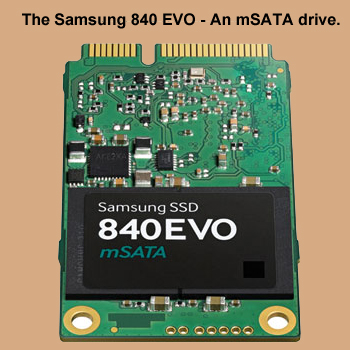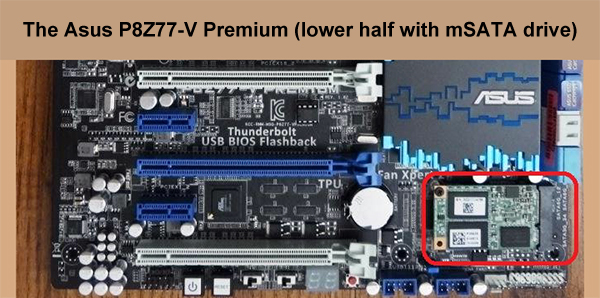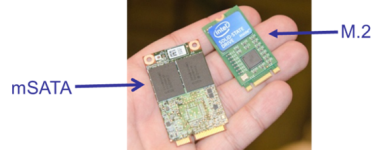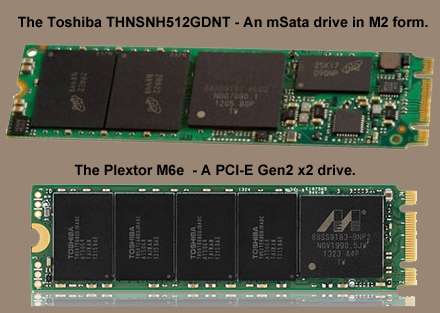M.2. Please Just Standardize
With 2013 witnessing the phase out of mSATA, and introduction of several novel standards of progressively diminutive SSD hardware emerging here is a very small retrospective interpretation on how baffling things were if not for anybody else aid then for my own peace of mind.
Here is an mSata drive.

Essentially, the innards of a generic SSD, a device launched in 2009 and typically installed in laptops by vendors or adventurous hobbyists to conserve space with no performance penalty when compared to regular SATA SSDs.
Fast forward approximately three years to a thriving desktop wonderland of ultra speedy USB the third, scorching SATA 6G, oceans of PCI bandwidth and UEFI bioses with Mensa IQs and leading motherboard moulders began building accommodation to support these drives into their proud creations.

Thus, the cumbersome desktop could reap rich spoils. A super swift super slim boot device, a drive especially reserved for voluminous virtual RAM or a quick and quiet caching solution for larger, mechanical hard drives.
No sooner had interest spread amongst early adopters, then the inevitable powers that were grew board and saw fit to revisit their blueprints. Inside a conference room flooded with false daylight and beautifully appointed with a magnificent showcase of Charles Eames counterfeits, bouts of impassioned brainstorming invoked momentous and judicious evolution. Amendments to height and width were promptly imposed as was the inspired decision to produce drives of varying lengths, in order to enhance potential capacity. The M.2 standard was upon us.

—————————————————————————————————–
M. 2 (NGFF) – Next generation form factor.
The revised connector was also conceived to trigger a titanic boost in performance, by permitting data to travel directly over the PCI-E bus instead of the comparatively bandwidth starved SATA bus, though in order to accomplish this, new drives were also needed.
Initially, as with any technological quantum leap, these highly advanced, resource concious devices were scarce and horribly expensive when compared to their mSATA ancestors. Thus, in order to quickly establish a healthy customer base for the fledgling design, those older siblings were hastily reincarnated in accordance with the same architectural parameters.

In brief, the one above, M2 Sata utilized the SATA bus to ferry data and supported speeds of close to 6 Gigabits per second (the bus’s bandwidth limit).
The one below, M2 PCi-E Gen 2 x2, occupied two PCI-E express lanes to over which to send and receive and hence, attained speeds of over 6 Gigbits per second, whilst the actual interface allowed for up to 10 gigabits per second. Their connectors however, were identical, each with two notches (known as M and B keys).




